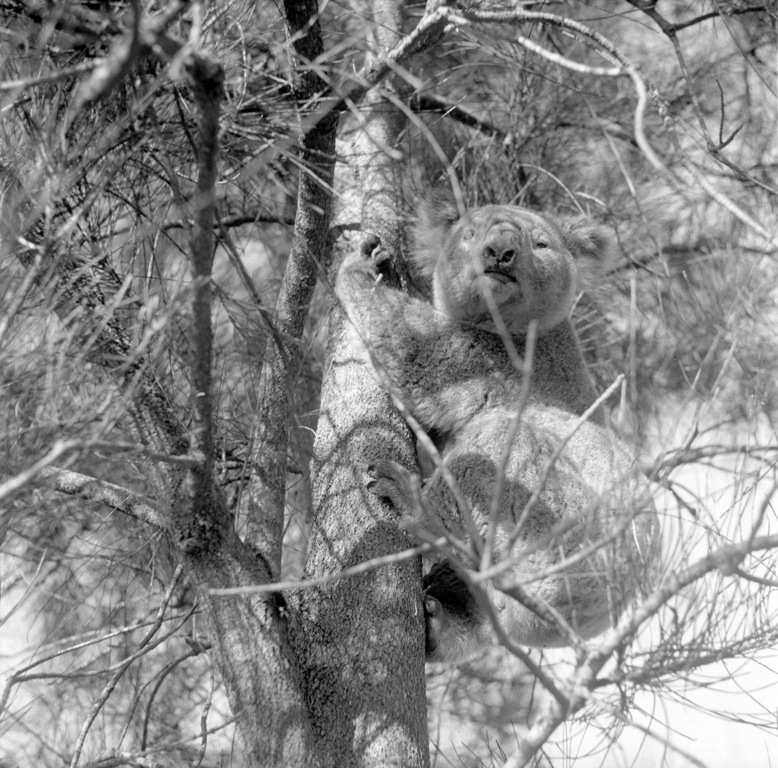May 10 - 16, 2020: Issue 449
Grace Brook
1921-2017
In the year 2000, I was completing a university project on Avalon and its early history. I asked my friend Adam Bayes’ Granny Grace to write down some reminisces for me, for it was clear she had lived in Avalon for some time.
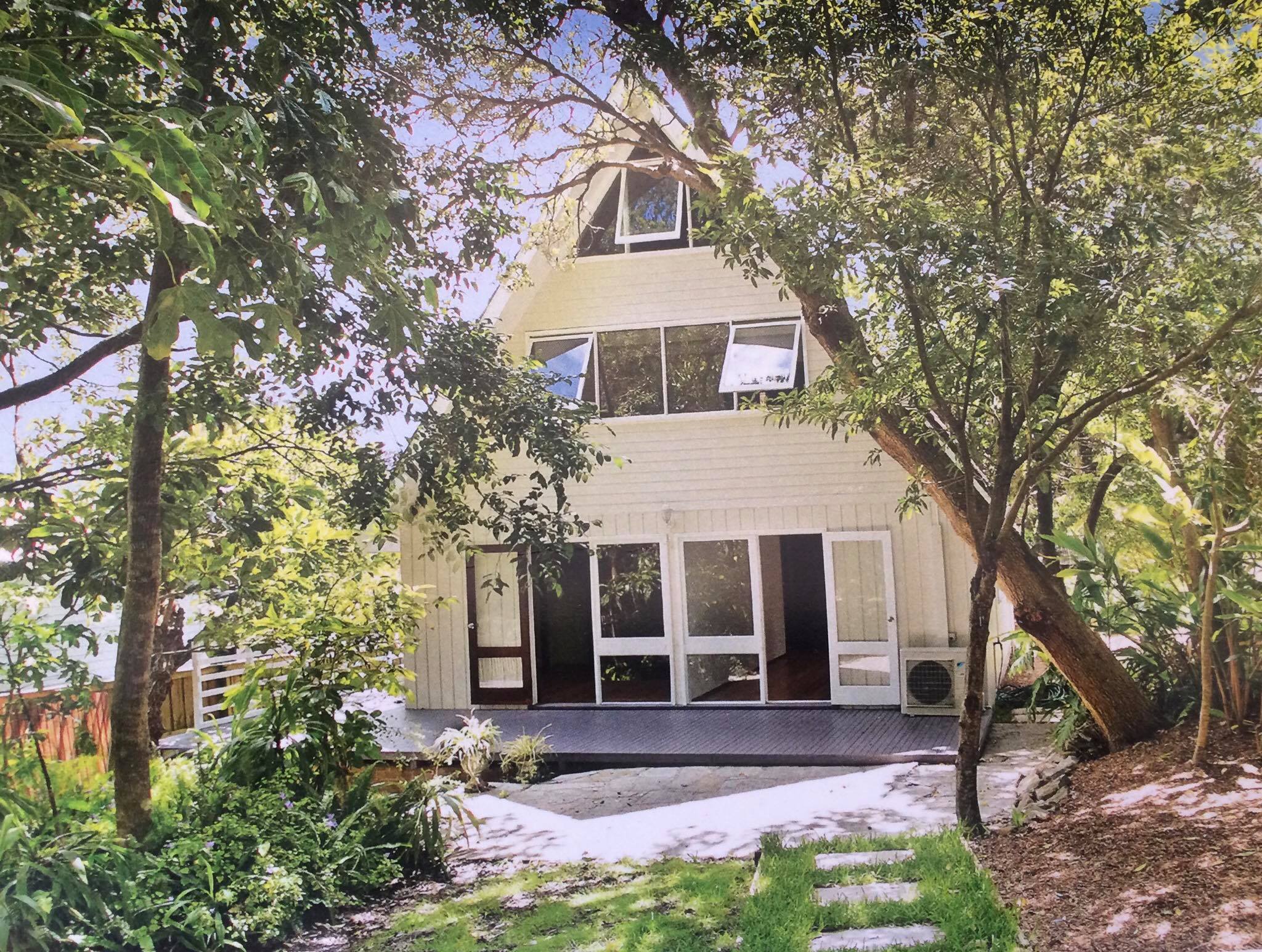
54 Binburra Avenue, Avalon Beach - Graces' home
Grace Bayes lived at 54 Binburra Avenue Avalon, in a house she built herself in the 1950s. A leafy gardened oasis, she was attracted to its several native fauna and flora. It was clear she had a connection with the Northern Beaches from an earlier time, and her memories reveal this when she talks of frequent Christmas holiday trips with her three sisters to Palm Beach from her childhood home in Lindfield.
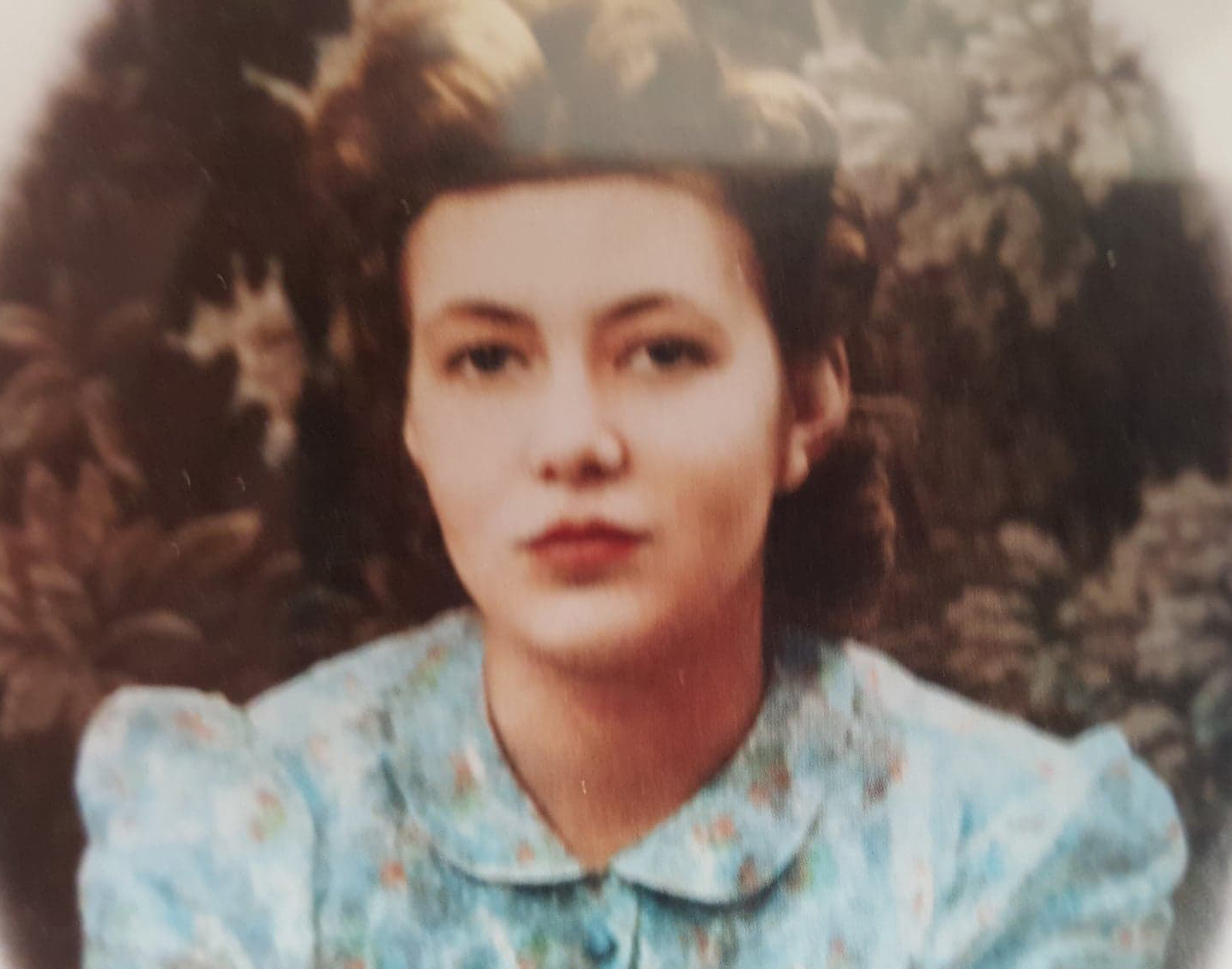
She was a woman who loved arts, nature and great relationships in her life (3 marriages and 3 children). She loved the arts – sculpture, painting, books, she loved history - Michelangelo, Leonardo Da Vinci, Marie Antoinette, Mary Queen of Scots, Charles 1 and Alexander the Great among her favourites. She also had a strong connection to the nature and environment of Avalon and the Northern Beaches, which come across in her several cliff and headland paintings, which she would struggle to produce when painting in the elements.
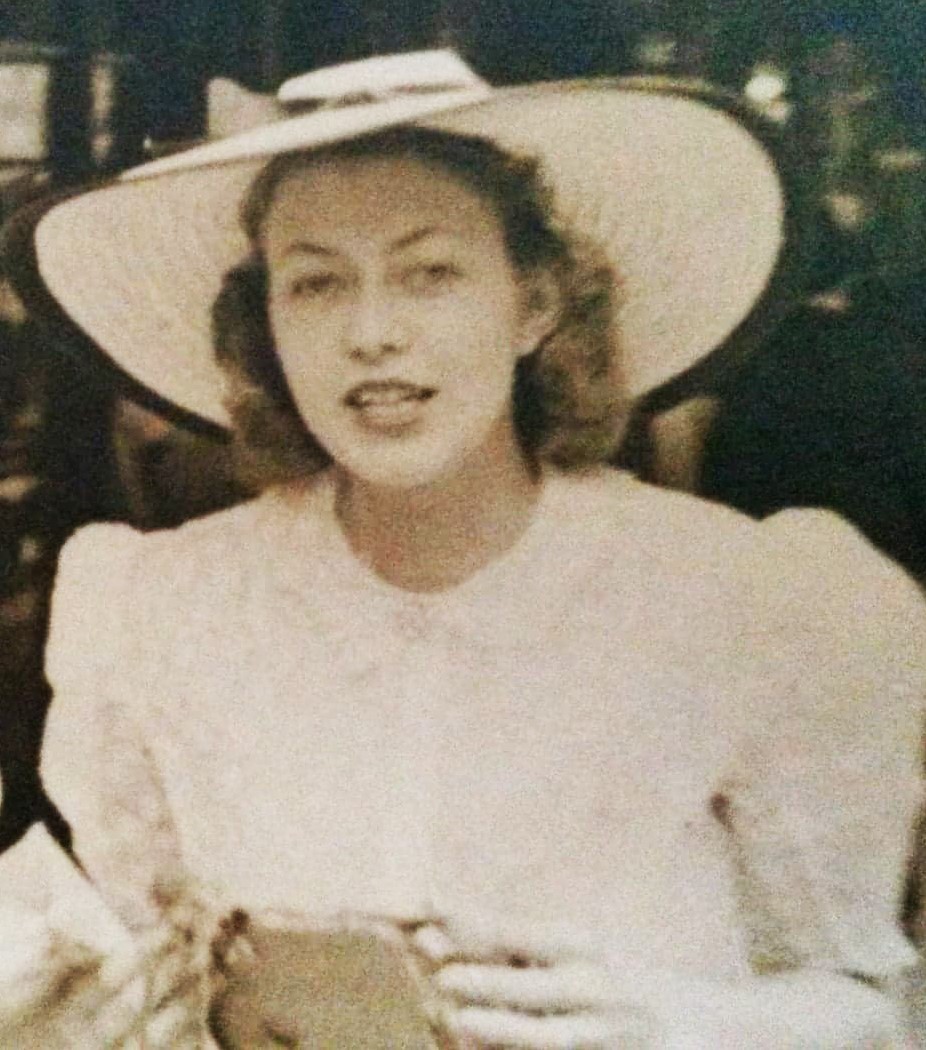
I have transcribed the memories, as I believe they are an important description of life in early Avalon, and give a good indication of the character of Grace. Also included is the eulogy penned by her son Robin Bayes, and delivered by her grandson Adam Bayes in 2017.
Paul McGrath
May 2020
War
Pearl Harbour’s American Fleet was bombed by the Japanese (without declaration of war) on 7th Dec, 1941. This was a great disaster and meant all out war. Singapore fell in about February 1942. Another climax.
Some Commandos were being trained in Broken Bay, Pittwater etc. for a daring assault by sea on Japanese ships in Singapore Harbour. When training was completed, these men were taken to a vicinity near the Japanese Fleet & attached explosives to Japanese ships (underwater) and successfully blew up the ships. All this was accomplished by split timing.
They were disguised as Japanese or Malayan fishermen complete with make-up. The name of the boat used was the “Krait” and it was on display at the SPIT for a long time. Could be in Canberra now perhaps.
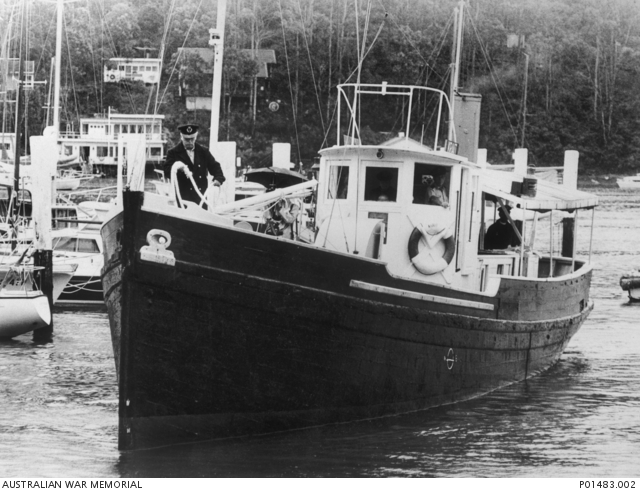
- https://www.sea.museum/whats-on/vessels/krait
- https://www.abc.net.au/news/2017-04-24/mv-krait-restoration-project-underway-at-maritimemuseum/8452742
- https://www.awm.gov.au/articles/encyclopedia/krait
(The Krait is now permanently moored at Sydney’s Maritime Museum)
North Avalon
There was a large Dairy Farm at North Avalon & the cows roamed willy-nilly all around the place. The remains of a DAIRY were only removed in the last decade and a house stands there now in Burrawong Road. One of the first families to settle in North Avalon was the Gonzales in what is now Alexander Road : Husb. and a wife, Daphne, settled in a tent and later another couple set up in vicinity of Albert / Burrawong Road. Each day the 2 ladies had morning tea! Alternating the hostess each day. There was nobody to gossip about but I guess that they loved the company. Mrs Daphne Gonzales passed away last year leaving a family and grandchildren.
(In these shots circa 1925, you can see the old dairy farm) Sections from https://nla.gov.au/nla.obj-162503612/view -
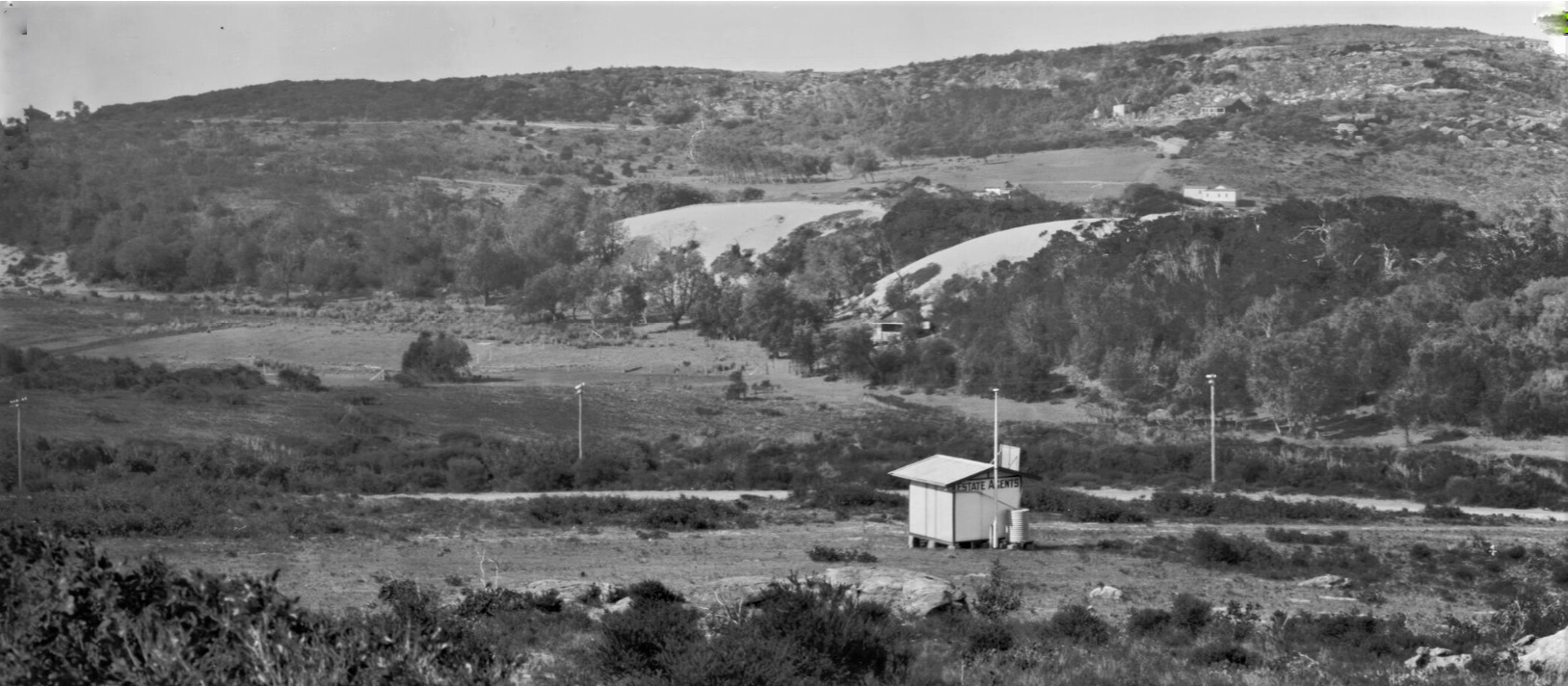
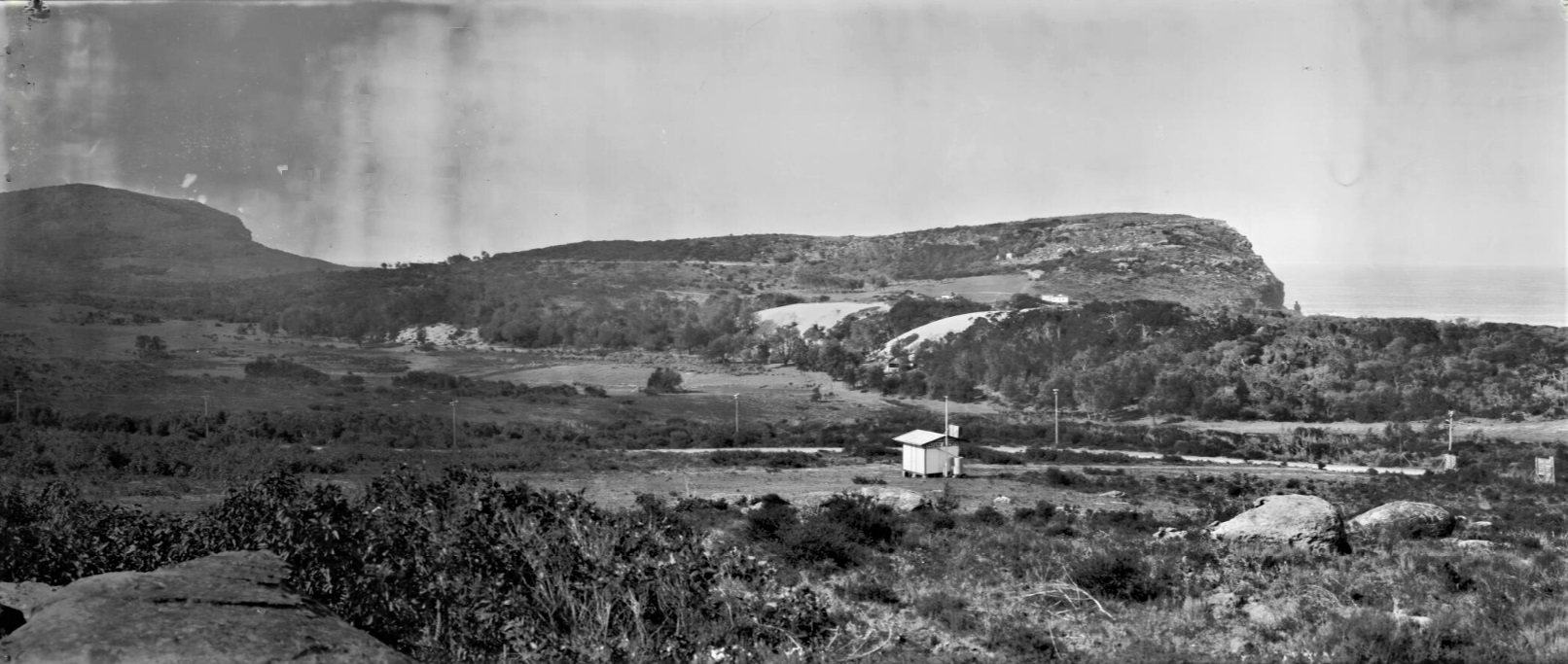

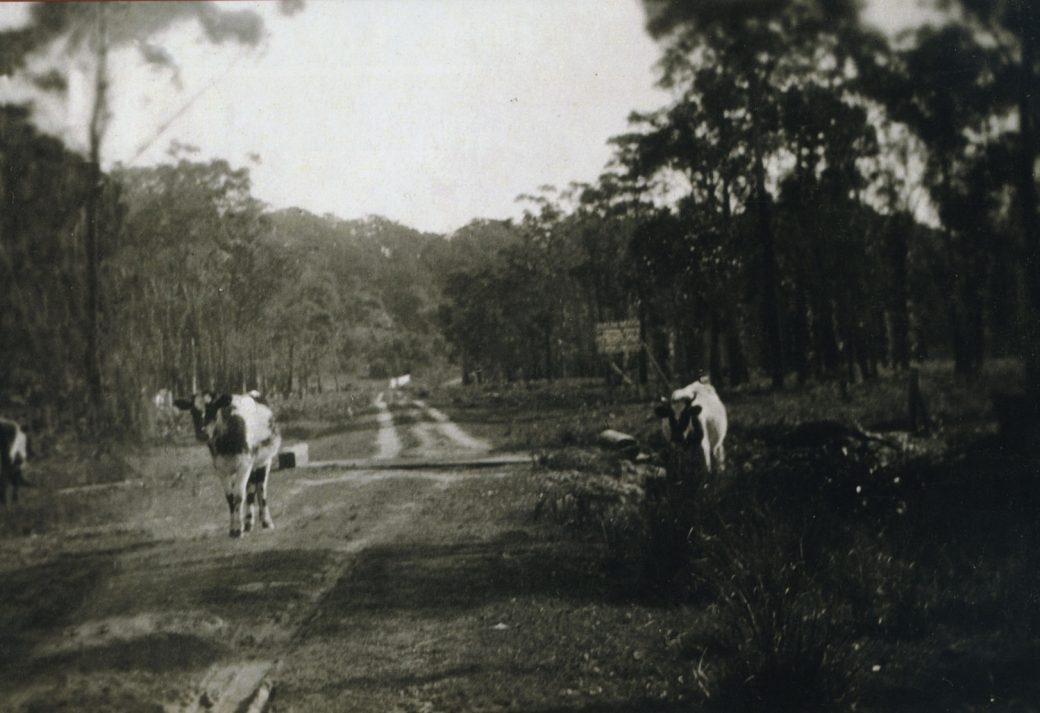
Cows seem to have been a problem to some and part of the landscape to others. As the subdivisions progressed what was the Clairville or Clareville road had become Avalon Parade - this wonderful Avalon Beach Historical Society (ABHS) image from the early 1920's shows how that road looked.
Avalon
“You are now entering the beautiful vale of Avalon”
These words printed in Olde English lettering appeared in black on a white shield on the golf links corner of Old Barrenjoey Road and Barrenjoey Road – now known as KAMAKASI Corner. This sign was removed when the war with Japan began, as all place names were removed from suburbs to confuse invaders. The sign was never re-installed unfortunately because it could attract a driver’s notice and divert concentration on the road.
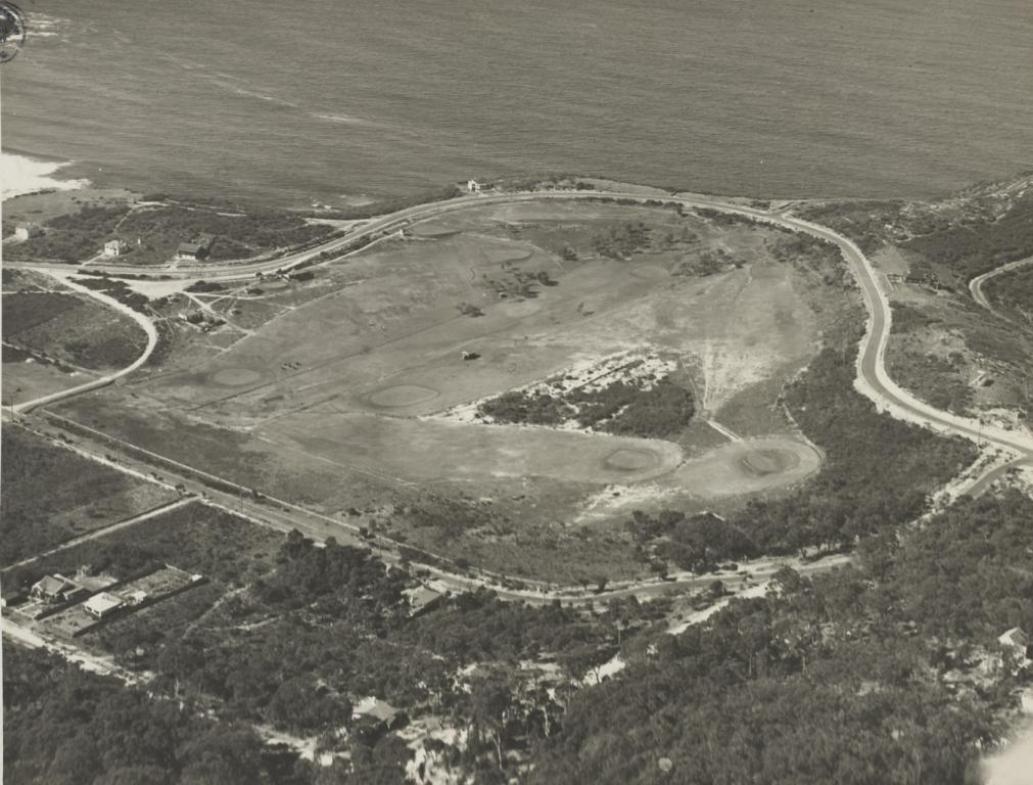
AVALON GOLF COURSE circa 1938 . Image No.: a2802001h, courtesy State Library of NSW - enlarged section from to show junction
“Indian Head”, the cliff at the Northern end of Avalon Beach which covers St. Michael’s Cave and has such classical features as it stares out and challenges the roar of the Pacific, could be better named “King Arthur’s Head” but (when suggested) every Atlas in the world would then have to be changed!!! However, calling this area “BANGALLEY HEAD” has not presented a problem (I presume).
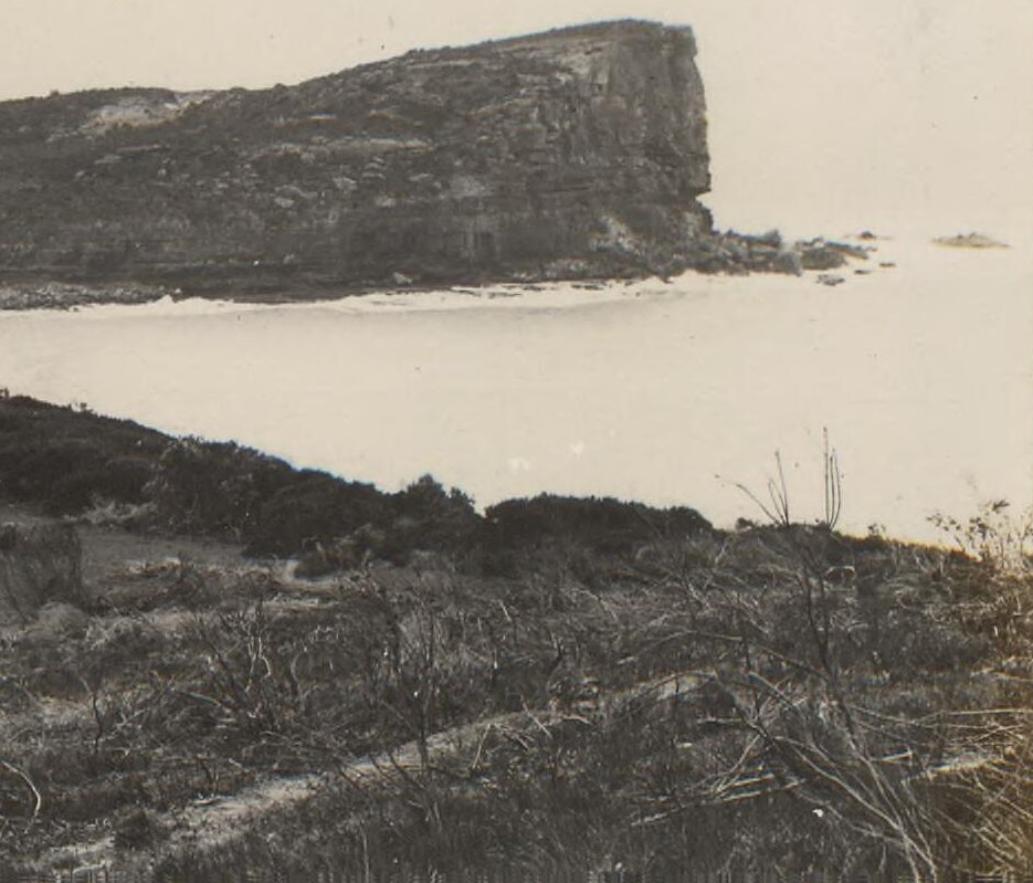
Enlarged section from Panorama of Avalon with Avalon Beach in the background, New South Wales, 1930, 2 - PIC/8140/2 LOC Album 1059 from Prospectus photographs of Avalon, 1930. Courtesy National Library of Australia. nla.obj-147287084-1.
Father Therry, an Irish priest was given a grant of land which covered a wide area. He wished to build a fine church on the headland & some stone blocks still remain there, but funds could not be found and the project abandoned. He raised money by selling his land to complete the building of St. Mary’s Cathedral in Sydney. The headlands are buffeted and battered fiercely by gales from the sea and a very strong building would have been necessary to combat these assaults of nature. A rock fall in the last decade sealed off the entrance to St. Michael’s Cave, which could have held a hundred men if necessary. At times it had been occupied by adventurous or homeless persons and little attention was paid to this, as Avalon’s reputation was small and nobody cared anyway. A fine fish meal could be obtained from the sea, oysters on the rock platforms, eels, Calamari and other shell fish abounded on shore and in the sea! A convict could live like a King!!
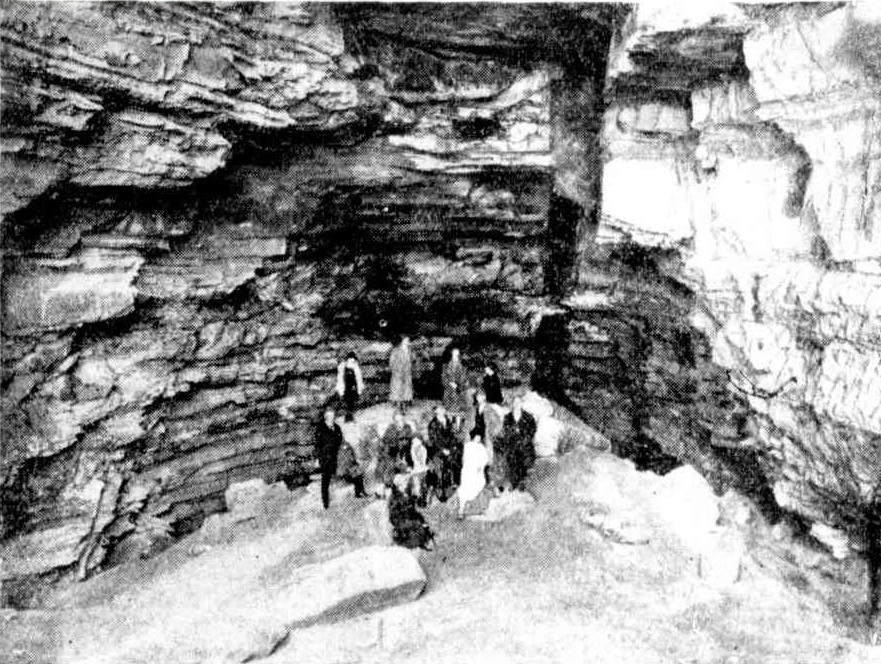
MEMBERS OF THE HISTORICAL SOCIETY IN THE CAVE. A Week-End Miscellany : History, Charity, and Sport. (1926, August 25). Sydney Mail (NSW: 1912 - 1938), p. 10. Retrieved from http://nla.gov.au/nla.news-article166523535 from: http://www.pittwateronlinenews.com/avalon-headland-landmarks-history.php
In a northerly direction is another cave named “The Ovens”. This has attracted the attention of divers and is also a safe haven for the shelterless and the hungry. There is a theory that the Pacific waters (might) link up with Pittwater but the channel becomes very narrow and so this theory has not been proved yet. It is true, however that these and other caves were used for the storing of contraband in earlier days when the Customs House was located on the Pittwater side of Palm Beach and demanded full details of all merchandise entering the country. Later the smuggled goods would be collected from the hideout.
The old Customs House was very comfortable, situated close to Pittwater Beach. I stayed there several times for Holidays in the 1930s at Christmas. The rooms were quite spacious and there was a verandah and a barbeque in the garden. Several jetties were there which were later claimed by the sea. This was a paradise for campers who loved playing with boats, doing some fishing etc. and a swim. Later (due to pressure), this camping area was disposed of. A loss for the weary executive who wanted a natural holiday. Children played and swam all day.
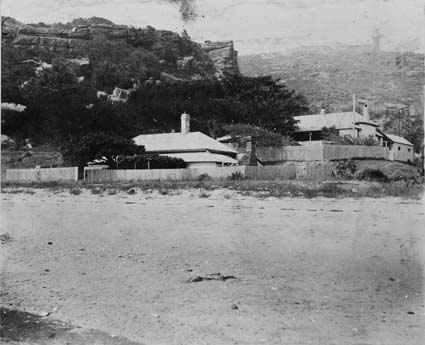
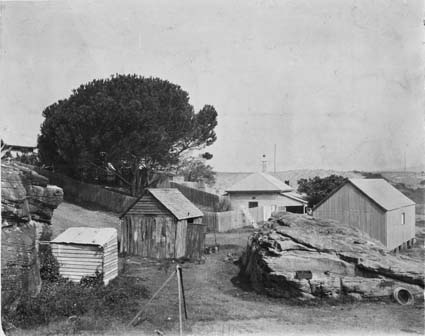
Barranjoey cottages, Date : 1906, Image nos. : C4076, from National Archives of Australia
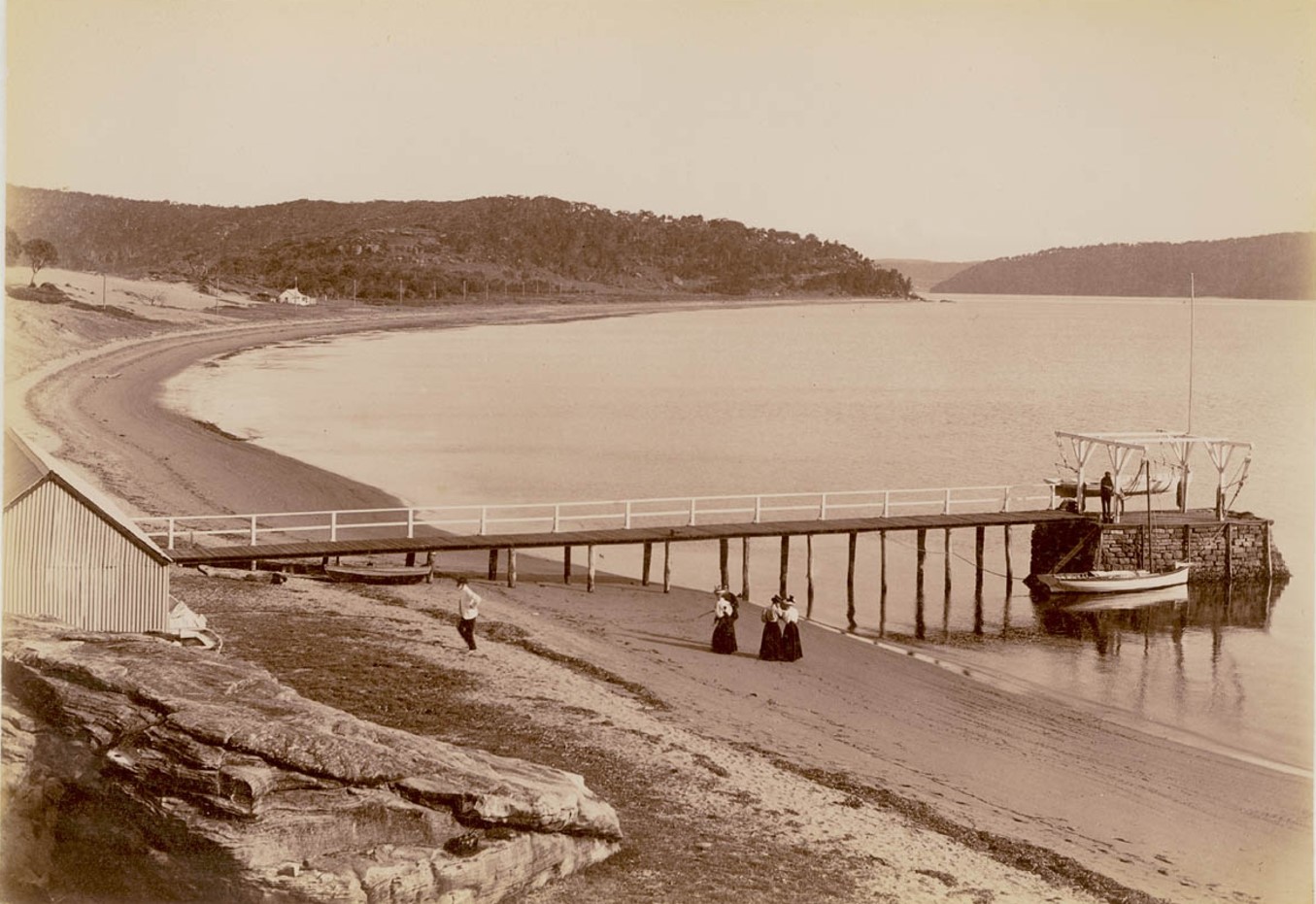
Wharf, Barrenjoey, Hawkesbury River, 1900-1910. Pic No: a116421, Courtesy of The State Library of NSW
The Sand Dunes Of Avalon.
These presented beauty and protected homes from the savage winds which blow from the sea. They were a good buffer. In the 1960s / 70s, a gullible Council allowed the invasion of these dunes by a local builder. A wealthy man – he wanted Avalon’s sandhills for his buildings – it was easy, large scoops and loading were the only necessity. The people in Avalon whose protests had successfully been ignored took matters into their own hands and fearlessly assembled their cars, trucks etc. in the paths of the masters. “Where there is a Will, there’s a way.” The practice of spreading Avalon’s sand ceased from that action by lovers of Avalon.
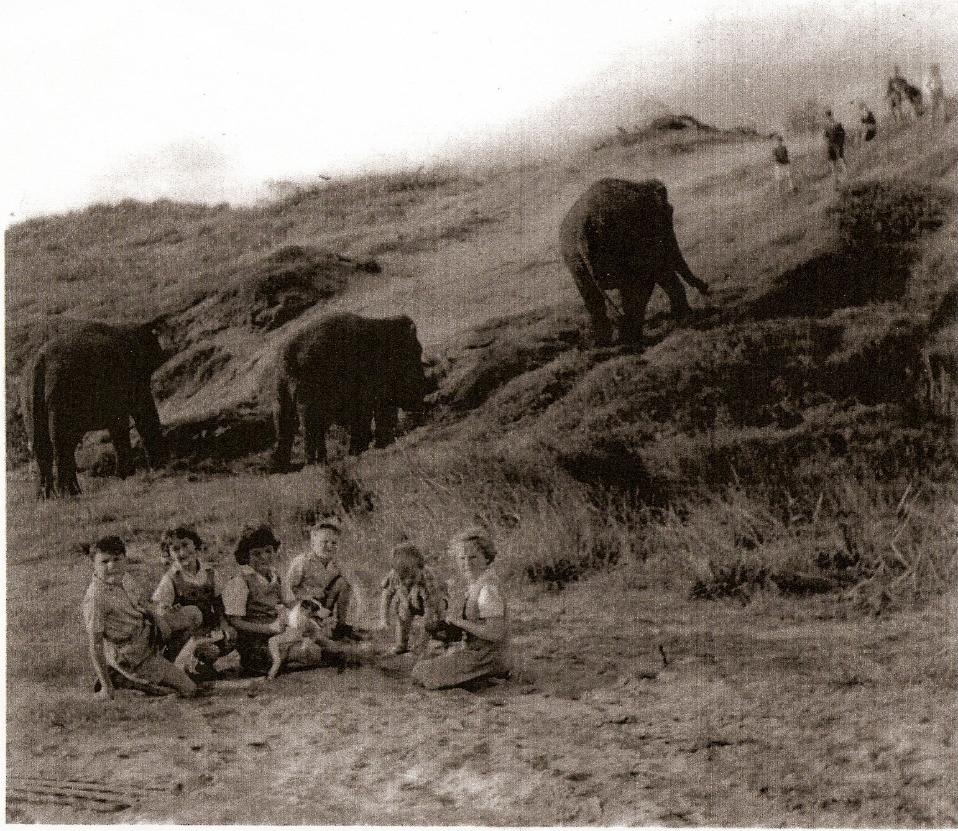
Circus comes to Avalon. Elephants graze in the dunes in the 1960s - photo courtesy Pittwater Natural Heritage Association - Avalon Dunes Restoration Bushcare
In 1941 there was a large colony of Koala bears in Avalon. There were only two shops and very few homes. Stan Wickham, a retired Football Champion had his Store-come-PostOffice on the corner of Old Barrenjoey Road and Avalon Parade, now a Café. A Frenchman, Monsieur Le Clercq ran the other shop where the Barefoot Boulevard now stands. It was very quaint, with a tingling bell on the door and inside it was laden to the gunwalls with an indiscriminate collection of odds & ends needed by humanity. It was just so fascinating! – Where does one look for what?!! Goodbye Supermarket – Monsieur he knew where it was if he had it. It was all educational and patience was cultivated by Avalonites. If meat was desired – well – there was a bus to Manly.
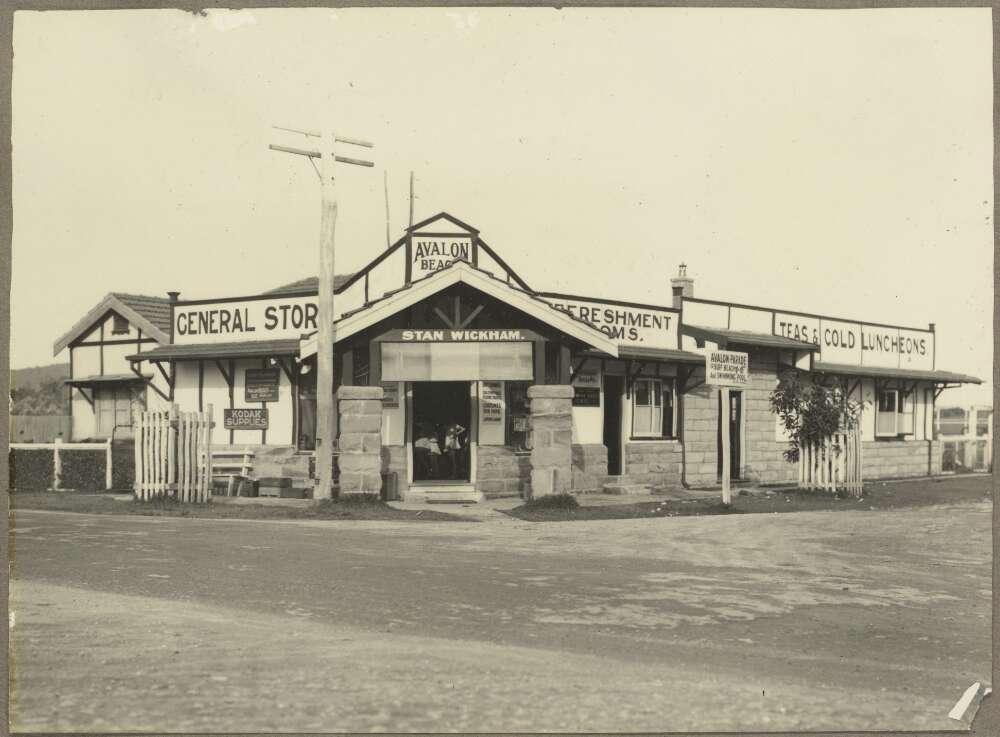
Avalon Beach General Store owned by Stan Wickham, on Avalon Parade, New South Wales, 1930, Image No.:nla.pic-an24768496, courtesy NLA.
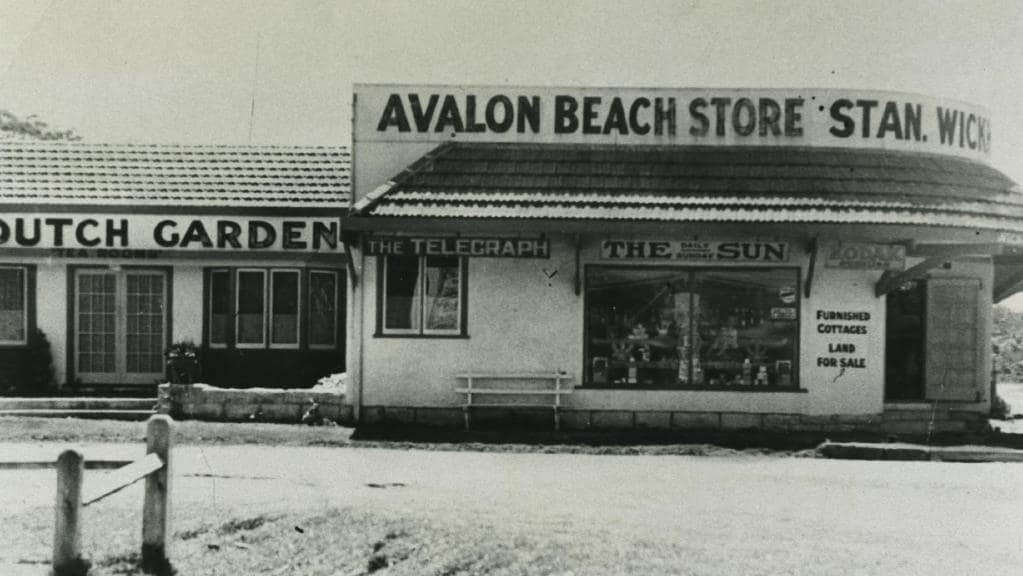
I guess this original store became the Monsieur Le Clercq store once Stan Wickham opened his second shop.
The large colony of Koala bears was destroyed by fire in 1941 (along with possums etc.). As a fire travelled from Avalon over the hill to Newport. This was a great loss. The bears used to keep my sister and I awake at night, as we slept out on an open verandah in a house called “Rest & be thankful” – called after a mountain in -----.
There were campers on the area now a park with skate board space for children. A fruit / vegetable shop and butcher later set up business as a small cake shop.
The mangrove swamps in Pittwater’s Careel Bay inside Hitchcock Park, were threatened by the proposed building of a Marina. The noise from motor boats and constant movement in the water would have destroyed this breeding ground for the fish. Fortunately, due to public protest this proposal was never developed and the livelihood of professional fisherman was left untouched.
The highlife of the year 1943 was the marriage of Lois Wickham, daughter of Stan Wickham, to an aide-de-camp to General McArthur**. Lois was a petite brunette with beauty outstanding and I remember her with a neat black fringe.
Eventually she went to live in the San Fernando Valley in U.S.A. This boosted up the morale of the handful of Avalon dwellers who did not have to rely on the song “Avalon” for social standing.
“I left my love in Avalon
Beside the Bay
I left my love in Avalon
And sailed away
I dream of her & Avalon
From dusk till dawn
And now at last I’ll travel on
To A…V…A…L…O…N”
https://youtu.be/zmaKpp51uzI
My husband Geoffrey sailed away in October 1941 with many others on the Queen Elizabeth which had been outfitted to carry troops, airmen etc. It changed course every 2 minutes as that was the period of time necessary to fire a torpedo. The ship went to the Middle East on that occasion. I received a letter and parcel from Alexandria 3 months later (The day my son Chris was born).
Apart from all this, there was a rumour in Avalon in 1941 that a German spy had been arrested in Barrenjoey Lighthouse ----- after out to sea.
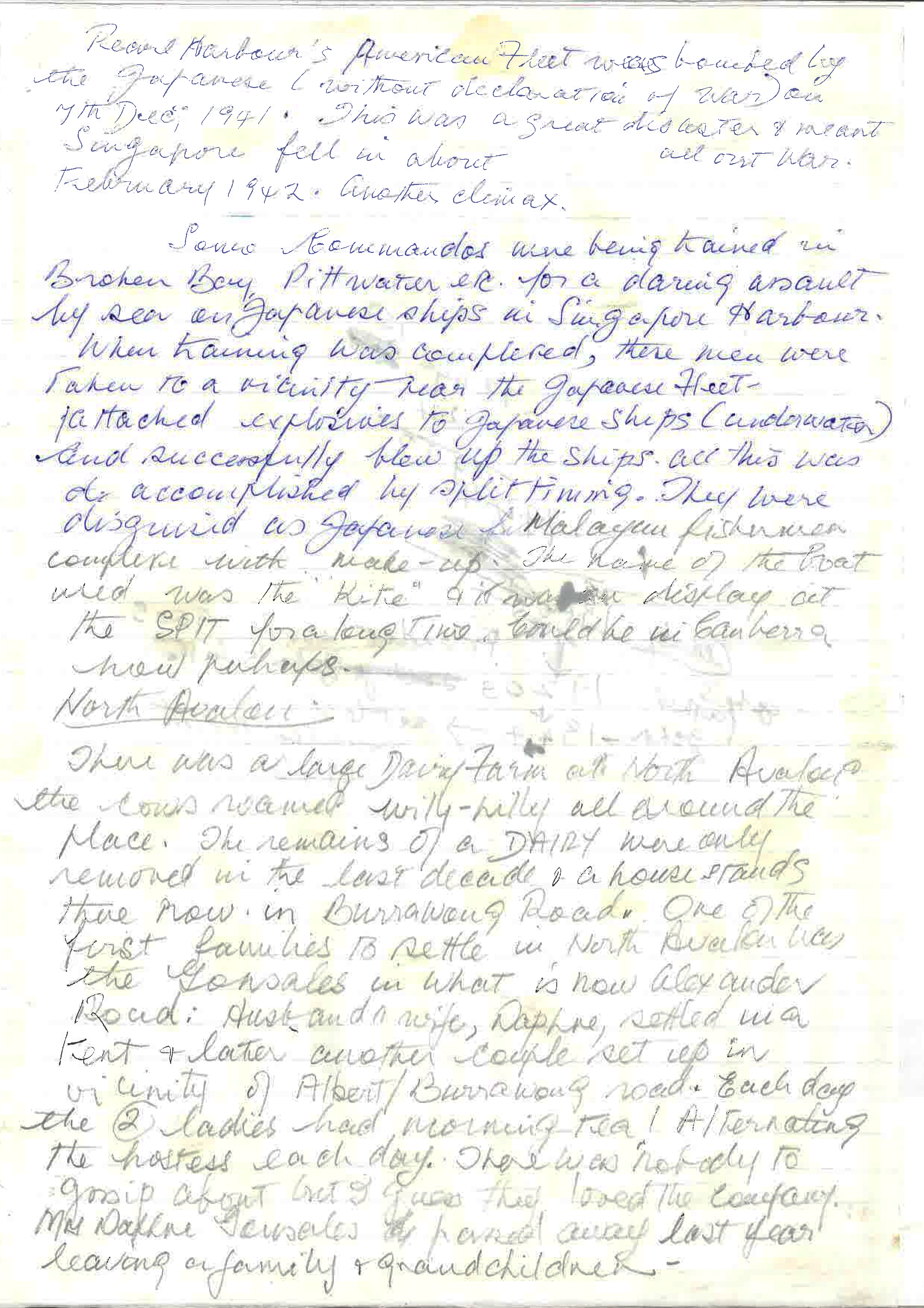
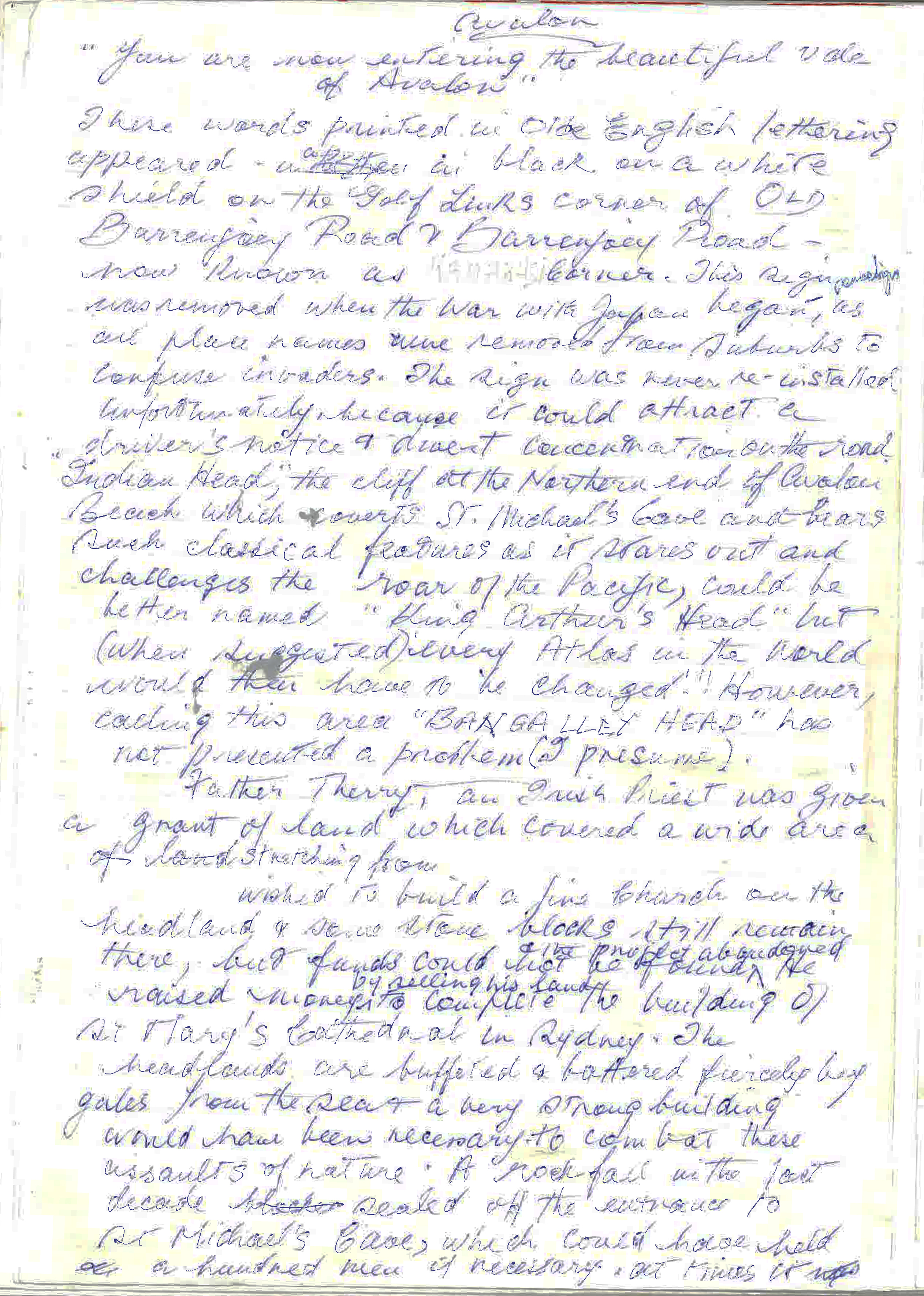
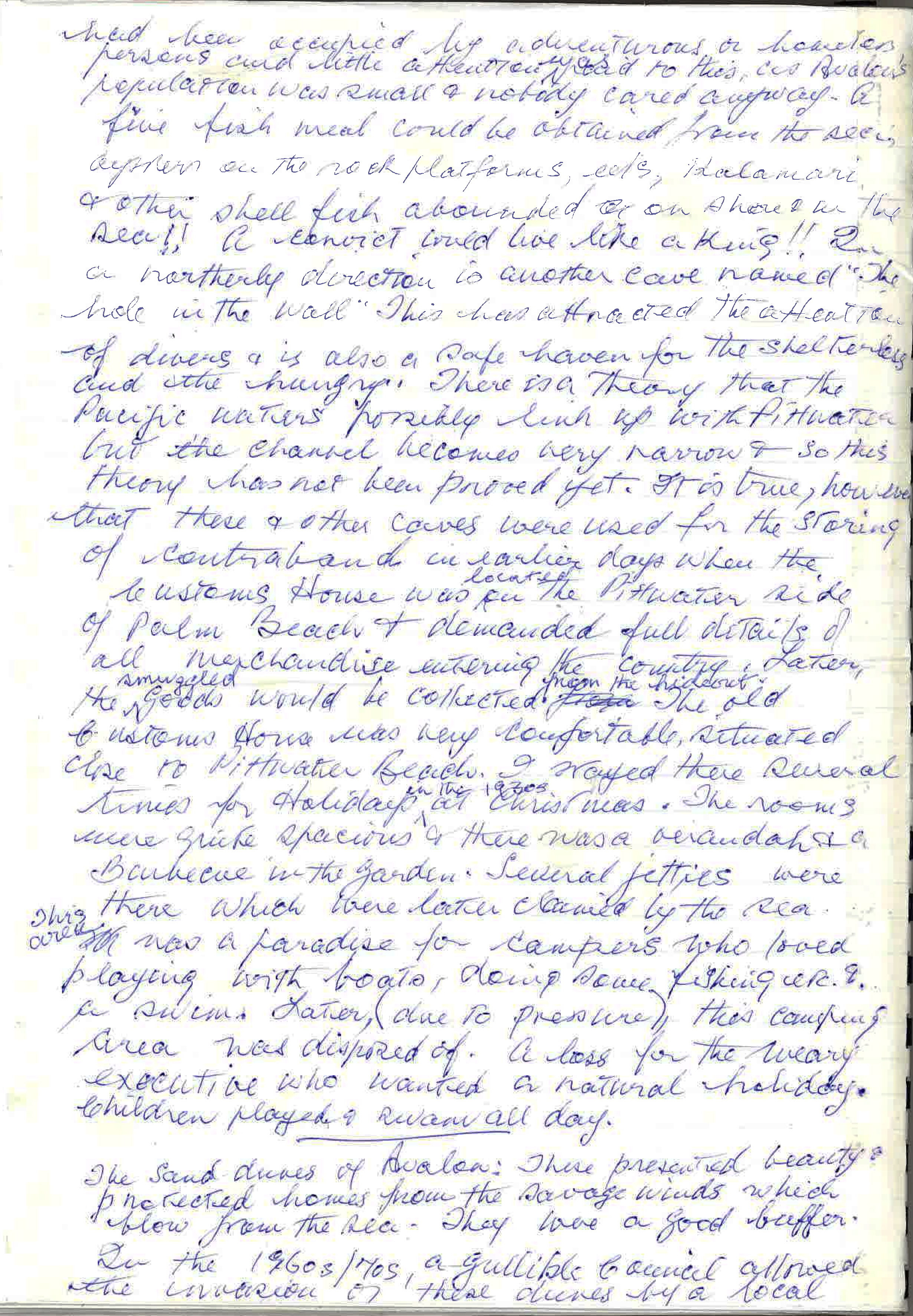
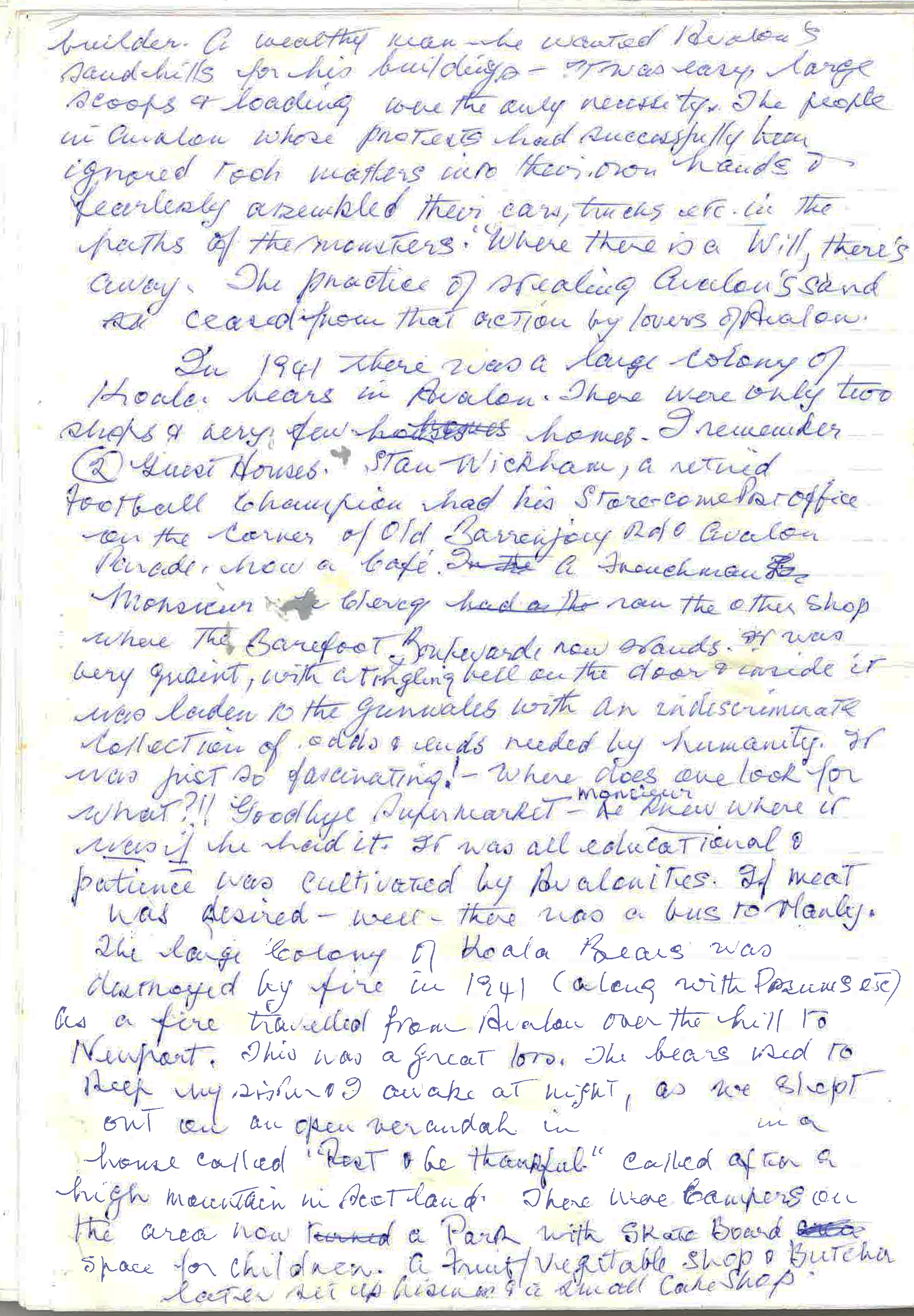
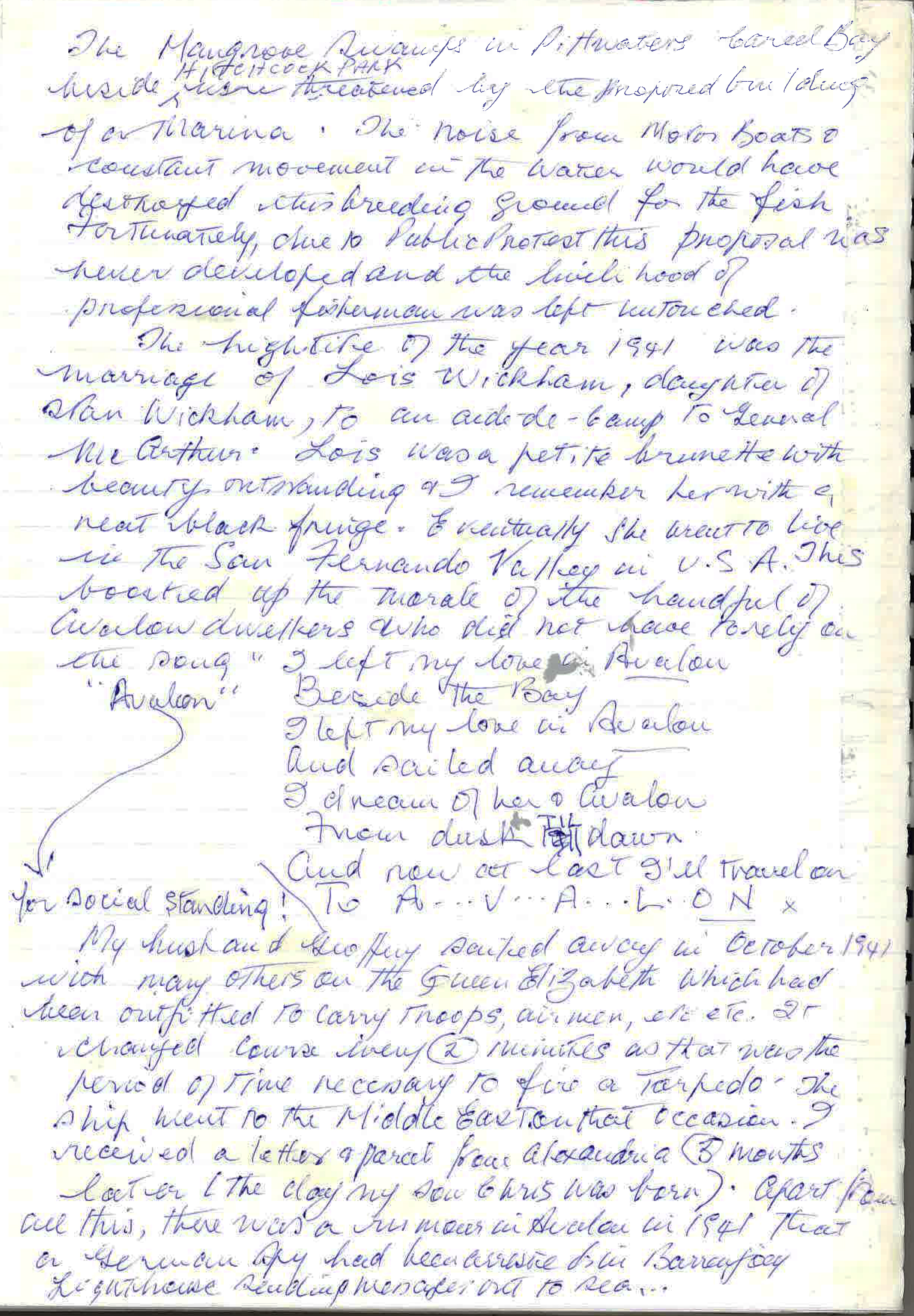
Selected Artworks
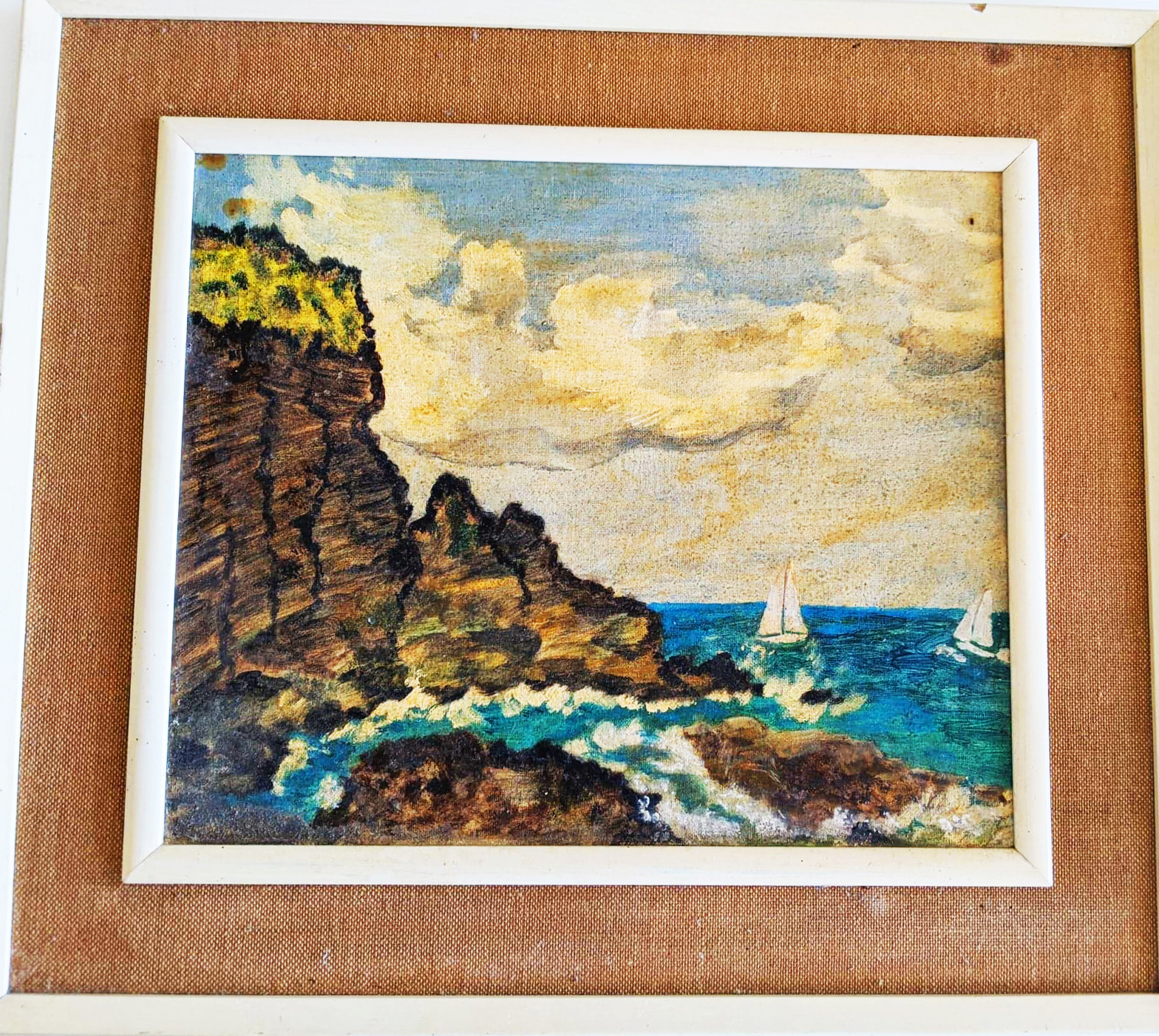
“CHOPPY SEAS OFF CAREEL HEADLAND”
A view looking north towards Careel (Bangalley) Headland, probably painted along the rock platform. There has been further erosion of the headland since, however the familiar upper curve can be seen in the Google image here.
“BUNGAN CASTLE” 1964
This was a Manly Art Galley Award winner in 1964, and shows Bungan Castle surrounded by thick vegetation. I think this painting is related to a miniature reproduction of a larger Bungan Beach painting Grace completed below.
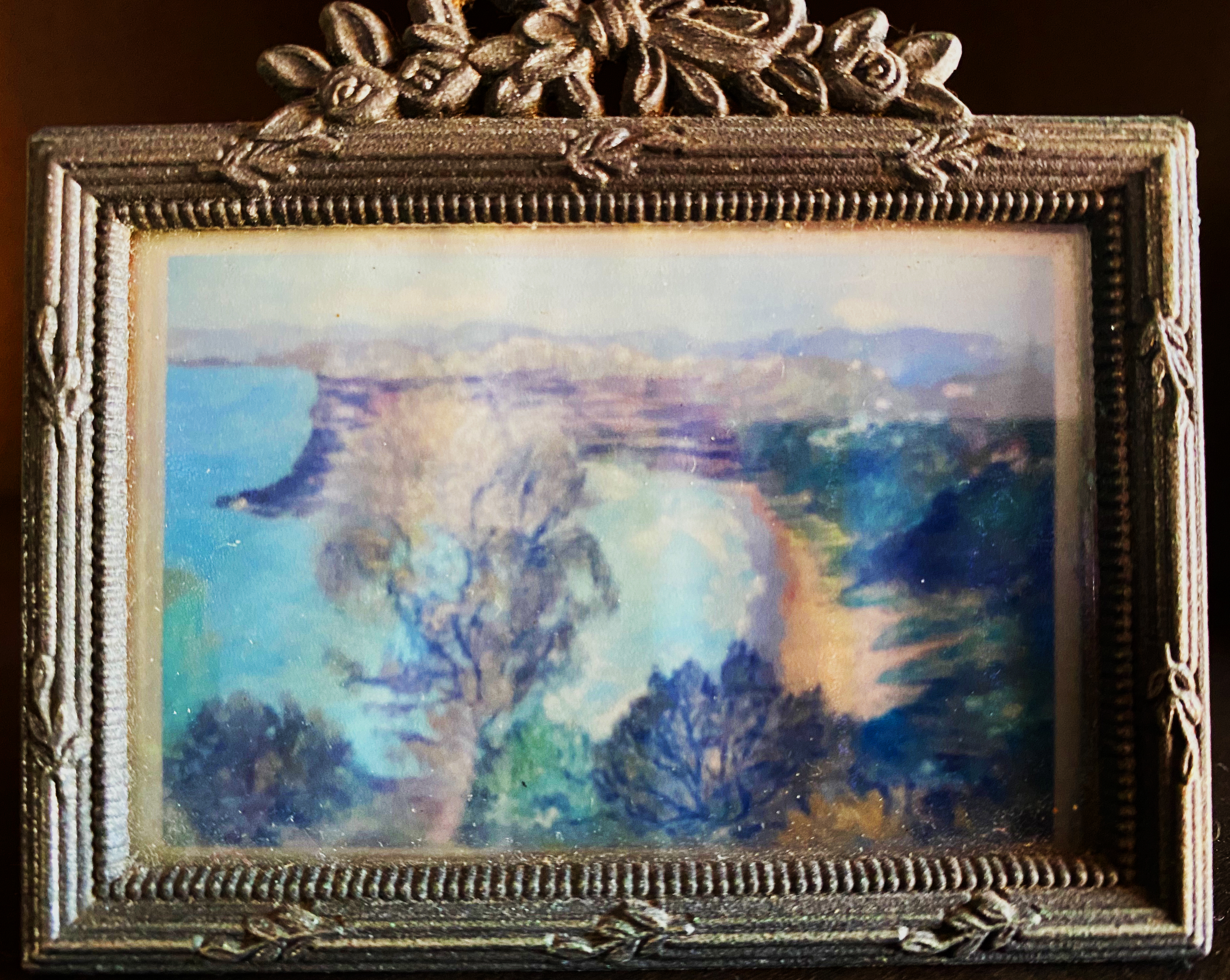
A painting from Palm Beach looking North, probably from Hordern Park at the Southern end of the beach.
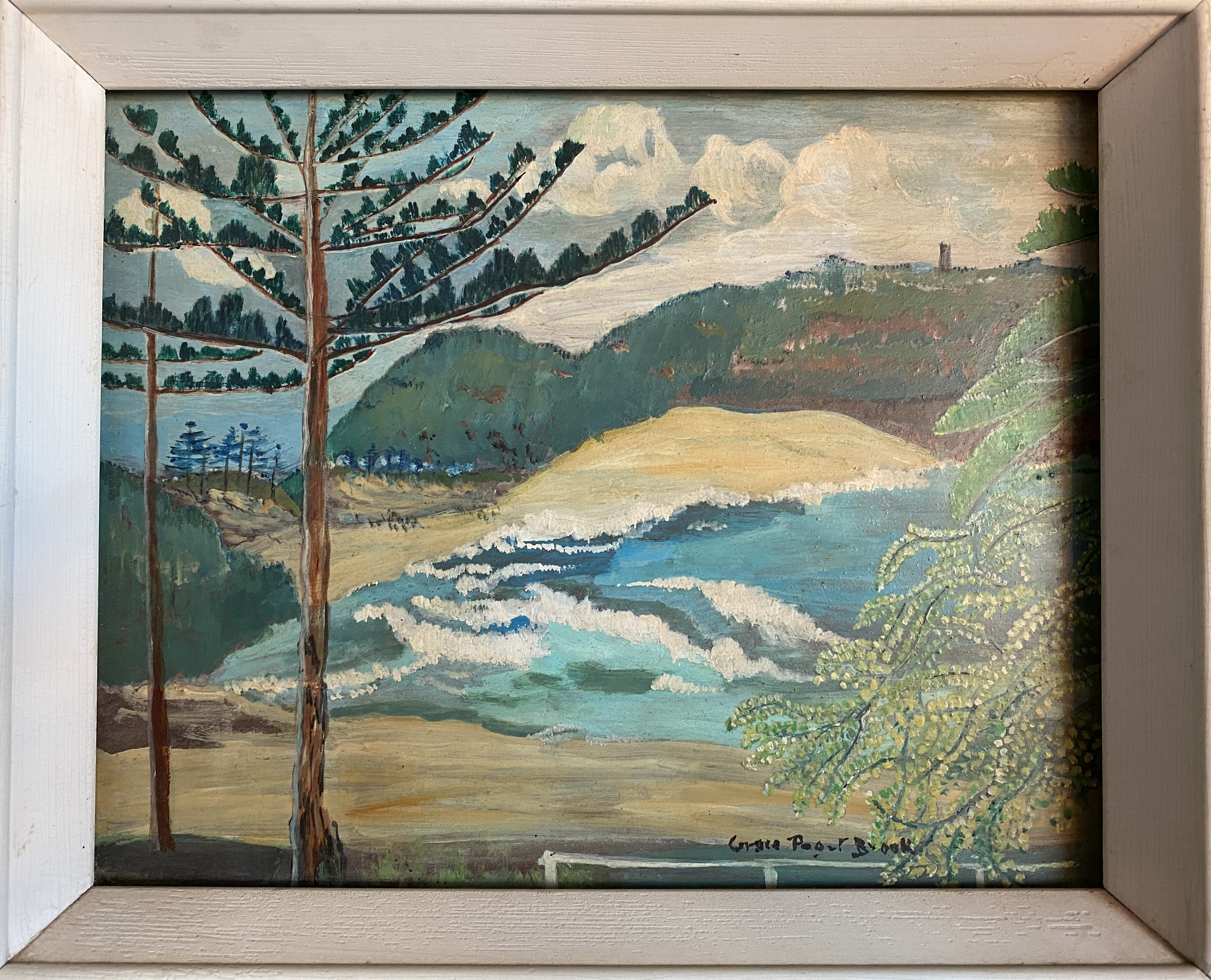
I believe these two paintings depict scenes in Tahiti.
This leadlight artwork replicates a scene in 1474 - William Fitzwilliam and Elizabeth Chaworth.
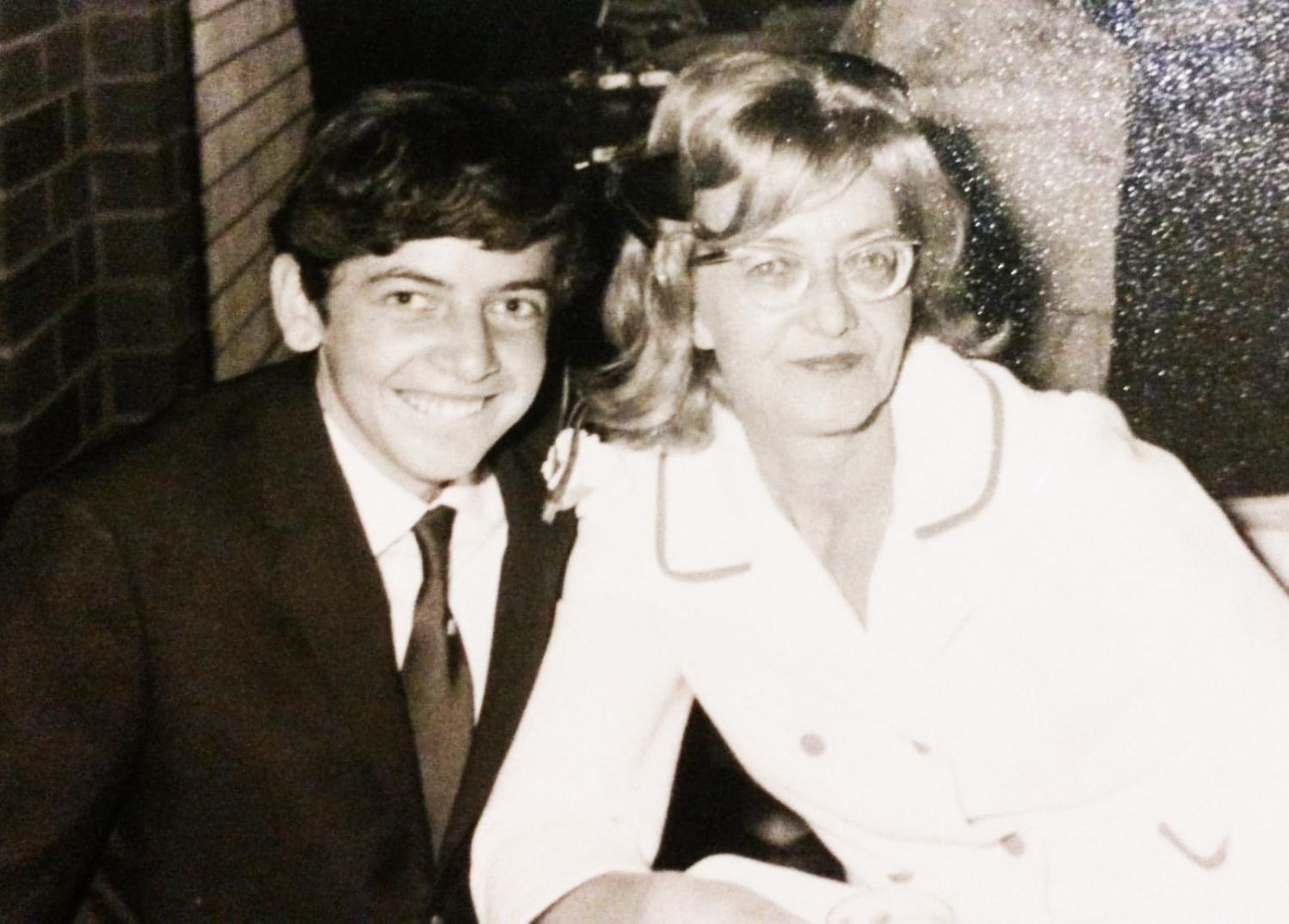
A LIFE OF HER OWN CHOOSING
Written By Robin Bayes (Pictured Above With Grace), Spoken By Adam Bayes.
At the top of this eulogy are the words ‘A Life of Her Own Choosing’. These words really encapsulate the theme of Grace’s life who - even as a child - fought to choose her own way in life, to do what SHE wanted to do. It was a much harder road, it was an unconventional road but it was HER road – and she fought all the way to travel on it. And travel on it she did.
Grace Paget Spencer was born on St Valentine’s Day, 1921, on a hot summer’s afternoon at her family home in Lindfield on Sydney’s upper north shore – the much loved youngest daughter of Ivy Spencer and Joseph Spencer and youngest sister to Dorothy and Josephine; the three girls the apple of their adoring mother and father’s eye.
Grace always said she had the absolute BEST care any child could ever have growing up. She was doted on by her mother, father and two elder sisters – and yes, they spoiled her. Her world was private schools, maids, her beautiful dog Wuzzy who was always getting into fights, garden and tennis parties, and mixing with the more genteel side of Sydney. It was very much a privileged childhood.
She remembered so many things of that time; catching the noisy, puffing steam train to and from her school Pymble Ladies College, the horse and buggy that met her at the station, hitching a wild ride on the ice deliverers cart, the Great Depression with men knocking on the door pleading for work, walking across the Harbour Bridge with her father on opening day with thousands of others, her two sisters dressing up as 1920s flappers and dancing to the Charleston.
And, most of all, she remembered her father Joseph whom she adored and revered all her life. He was, she said, THE man in her life. He was a wonderful father – a self-made businessman who loved public speaking, rowing, the theatre and charity work, helping to establish St Luke’s private hospital in Sydney and becoming its first honorary treasurer.
As a child she remembered his long legs – and always running to keep up with him – and his fair skin and beautiful blue eyes; of him taking her to lolly shops, the shows at the Tivoli theatre, she was his caddy at golf – he was the pivotal centre of her life. So much of her childhood revolved around him; polishing his shoes each day, setting out and brushing his clothes which she loved to do.
When he suddenly died when she was 12, Grace was devastated, saying she really went into shock for months – such was the love for her father. She said recently: “We had such a short time together – but it was the BEST time. He was the man of my life”.
Grace, as many have attested, grew into a beautiful young woman. During the 1930s life was filled with a busy social calendar – elegant balls, tennis parties, some great friends – and many a beau lining up from the most eligible of families.
But that pre-ordained road was not for Grace – exceptionally strong-willed, strong-minded and stubborn, she chose her own road, marrying Chris’s father, country boy Geoffrey Bryant in 1941, just before he headed off to war in New Guinea and the Middle East. It was hard, never knowing if he would survive; but she had Chris by her side, and who has been by her side constantly for over 70 years. After the war she had a daughter, Vicky, who died 2 days after birth; she never got to hold the baby and this devastated her. She has requested that her ashes be buried with her baby daughter.
This was the ESSENCE of Grace; her daughter, however brief her life, was never forgotten or brushed aside. Subsequently Grace and Geoffrey divorced.
In the later 1940s Grace worked for the company Silk and Textiles, owned by Italian Claudio Alcorso – the most cultured of men who did much to establish Opera and the arts in Sydney. As production manager she was responsible for the print production from go to woe – a big job for a woman in the 1940s. When Claudio re-located the business to Hobart Grace and Chris went to, where, at art classes, she met her next husband sports master and A-grade cricketer Clarence Bayes.
She gave birth to Marcus in 1950, and a few years later twin boys who consequently died at birth. In fact, Grace nearly didn’t make it, needing 16 pints of blood to survive. Later, she donated 16 pints of blood back to the Red Cross in thanks. The marriage was difficult, it wasn’t easy from both sides, so Mum with children in tow, headed back to Sydney. Clarrie followed. Later Robin was born, but the marriage collapsed.
Later, her third husband, English artist John Brook, came along; a great painter but unstable and erratic - combined with Grace’s strong will, it was a total, fiery disaster. When asked about why she married him she would say nonchalantly: “Well, I was on valium at the time”.
From then on Grace truly led her own life in her house in Avalon which she built herself; a life full to the brim despite the rigours of working in the city for years; she was a member of the NSW Shell Society, a member of the Chopin Society, the Art Gallery of NSW, she hung off windy cliff edges painting landscapes, attended art classes and festivals, wrote poetry, worked in her free-range garden, travelled to Europe and Tahiti; absorbing everything along the way.
She loved the arts – sculpture, painting, books, music, she loved history - Michelangelo, Leonardo Da Vinci, Marie Antoinette, Mary Queen of Scots, Charles 1 and Alexander the Great among her favourites.
And by nature she was kind and caring – excessively so - always putting her hand out to the wounded in this world – be it a bird, a lost dog, a small plant struggling to survive in the garden, a lost child or adult. Even with three children bringing them singlehandedly, she opened her home and heart to her much-loved foster son Gordon, who is with us today. Her home was always full of stray dogs that adopted her, wandering kids, possums stuck in the roof, baby birds in the garden – there was always some sort of action going on. They all gravitated to Grace’s.
I am sure, in her mind, her birds and animals and flowers, were all with all in her final moments.
We all have wonderful tales of granny – she always came from left field; when Robin asked her for advice on what career he should choose he was met with dead silence but a lot of thought; a cup of tea was made and then she pronounced “How about tap-dancing, Australia doesn’t have one good tap dancer’”………..the fact that Robin couldn’t dance at all didn’t matter.
Then there was the famous twin baby possum scenario – twin possums are very rare. So she called in the Museum of Science who made a beeline for the house. After much coaxing the rare twin ‘baby possums’ waddled out….great except they were two very well fed rats!
Then there was the Mulberry wine period, where Grace concocted strange bottles of what she called ‘Mulberry Wine’, no one was game to touch it, except Margot who is here today. It used to froth and hiss under the stairs and periodically explode.
And, despite all her artistic talents, Grace, simply, couldn’t cook – anything! Chris, Marcus and Robin always wonder how they exactly survived. There were bizarre chicken concoctions, frankfurts boiled to death, the occasional weirdly dilapidated cake that refused to rise more than an inch. Dinner at Granny’s was always a lucky dip for young and old.
And who can forget her dogs, which she dressed in cardigans and scarves to keep warm in winter; and who would subsequently take-off down the street in all their colourful gear. Brandy, Jacko, Mini, Buffy, Pancho, Juney – and Wuzzy from her childhood - they have all come and gone.
…….
Mum…Grace…. Granny…..you lead a long life, a life filled with kindness, love and much happiness and fun. And, despite all the struggles you were incredibly resilient and strong, standing up and taking life full on for better or for worse. We will ALL miss you – you have given us all so much, and left us with so many memories.
…….
So here, in this chapel, I believe OUR family can stand before Grace’s much loved parents Joseph and Ivy, and say truthfully: ”We return Grace to your loving care. We have always loved her deeply. We have cared for her with all our heart, as she has cared for us, and will cherish the memory of her for the rest of our lives.”
God Bless you Grace – and thank you.
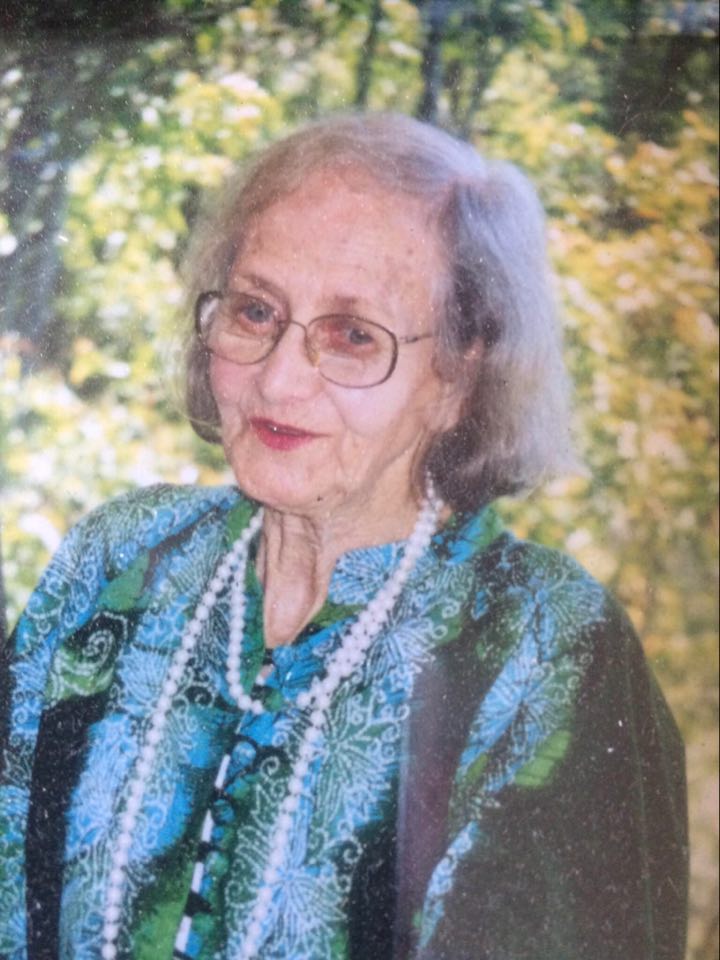
Notes
Born July 9, 1912 and passed away May 16, 2005.
After having graduated from UCLA with a Bachelors degree in Education, where he was a member of the ROTC, he received his masters and supervisory credential from USC. He taught in the Los Angeles public school system for 28 years, where he shared his love of art and history. William served proudly as an officer in the U.S. Army from 1941-1953, serving with honour in the South Pacific during WWII from 1941-1946. It was during this time that he met his loving wife, Lois. She remained the light of his life for the last 63 years. William is survived by his beloved wife, Lois; his two devoted children, son Gary, daughter Charlene Broudy, son-in-law, Sherrill; and endeared grandson Skye Gwilliam. Liked by all who knew him, William was a kind and gentle man with a great sense of humour. He lived a truly full life and will be greatly missed by his family and friends. Private interment at Forest Lawn Hollywood Hills.
